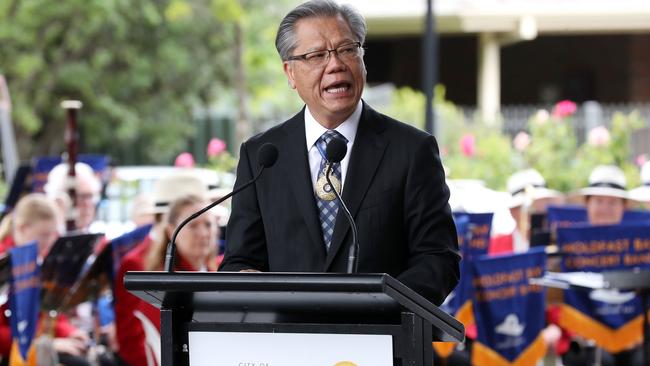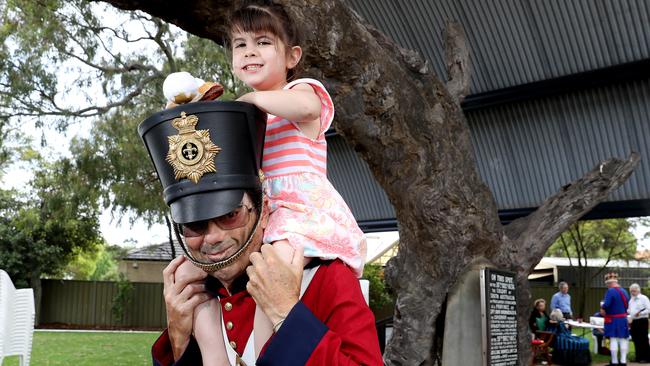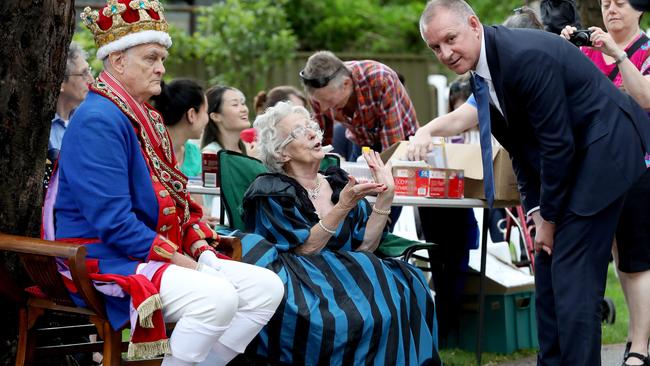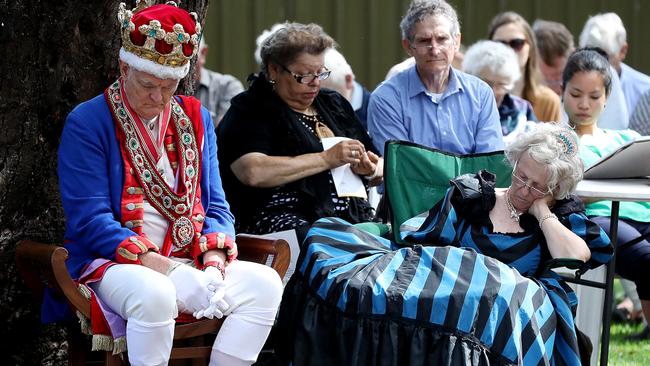Weather no barrier as SA turns out to join Jay Weatherill and Governor Hieu Van Le for Proclamation Day
IT was perhaps inevitable that the year of extreme weather in South Australia would play its part on a day to look back, and forward, at just how the state has pulled its weight over the past 180 years.

SA News
Don't miss out on the headlines from SA News. Followed categories will be added to My News.
IT was perhaps inevitable that the year of extreme weather South Australia has experienced would play its part on a day to look back, and forward, at just how the state has pulled its weight over the past 180 years.
Overnight storms had left a far corner of the setting for the annual Proclamation Day commemoration on Wednesday – the Old Gum Tree Reserve in Glenelg North – under water.
The British landing parties of 1836 would have felt at home under the unwelcoming grey skies.
The mood, though, was upbeat as five resplendent old-timers from the Fort Glanville Historical Association lined the short route taken by dignitaries to the bent Old Gum Tree, under which the proclaiming of SA as a state of the British Empire took place on December 28, 1836.
Photos from 1870 show the gnarled gum free of leaves and in decidedly iffy health, but the setting these days is smart and suburban.
A handful of Aboriginal land rights and recognition protesters were on hand to welcome the officials – minors first, then Premier Jay Weatherill and, with more pomp and motorbike outriders, SA Governor Hieu Van Le.
Minutes earlier, the two brass bands struck up the Leonard Cohen song Hallelujah, wonderfully played if ill-chosen, given the depressive musing is an ode to broken relationships.

South Australians he said, just as an aeroplane flew over to muffle him, had embraced the pioneering spirit and were versed in overcoming adversity.
“We’ve done well” was his message.
The Premier carried on the theme, speaking of social cohesion, a high standard of living and quality of life in SA.
A shout of “Aboriginal land rights” and a no to nuclear dumping cry marked minor dissent amid the proceedings.
The Premier later remarked that South Australians should be mindful of the balance between commemoration of the first landings and indigenous history.
Among the more than 200 people who attended, many were dressed in uniform of yore – ladies in bonnets, the military and a King William IV (the monarch of the time), plus a Queen Adelaide who couldn’t resist 40 winks during the proceedings.
Richard Oldham, whose grandfather’s grandfather arrived in SA on April 1, 1838, came attired as a royal marine.
“There were 20 marines aboard the Buffalo (the first ship),” he said.
“It took six months to get here. When my ancestors left there was one child; when they got here there were two.”




